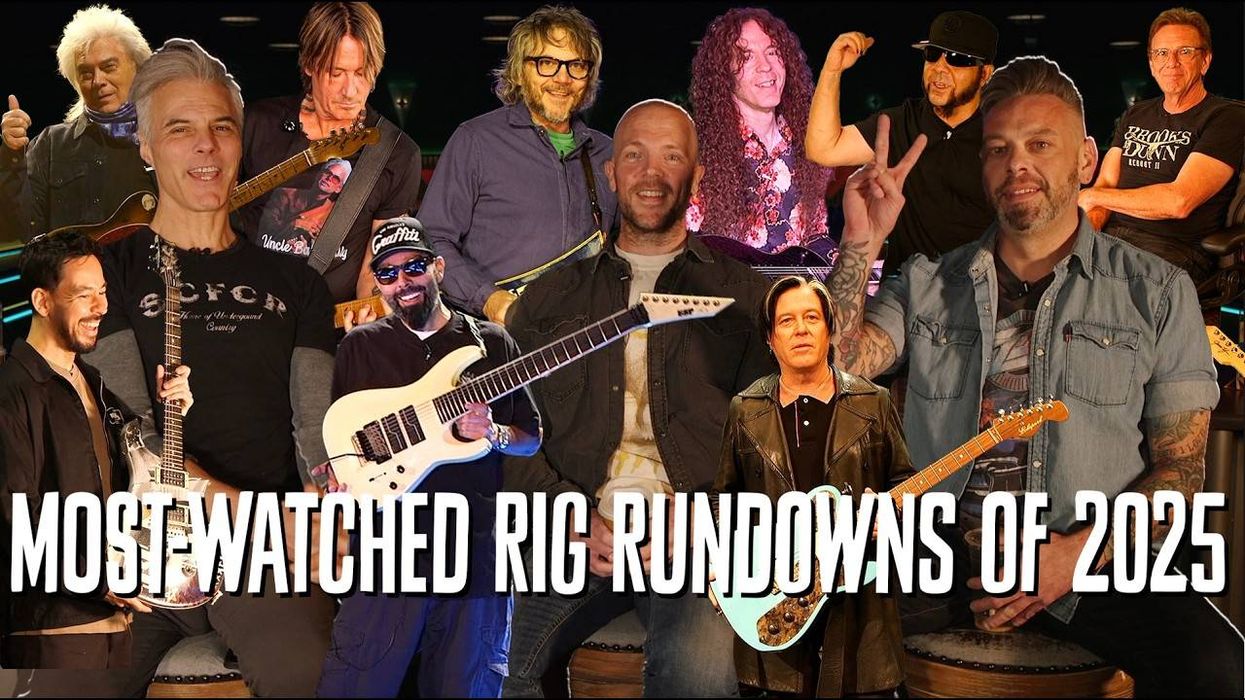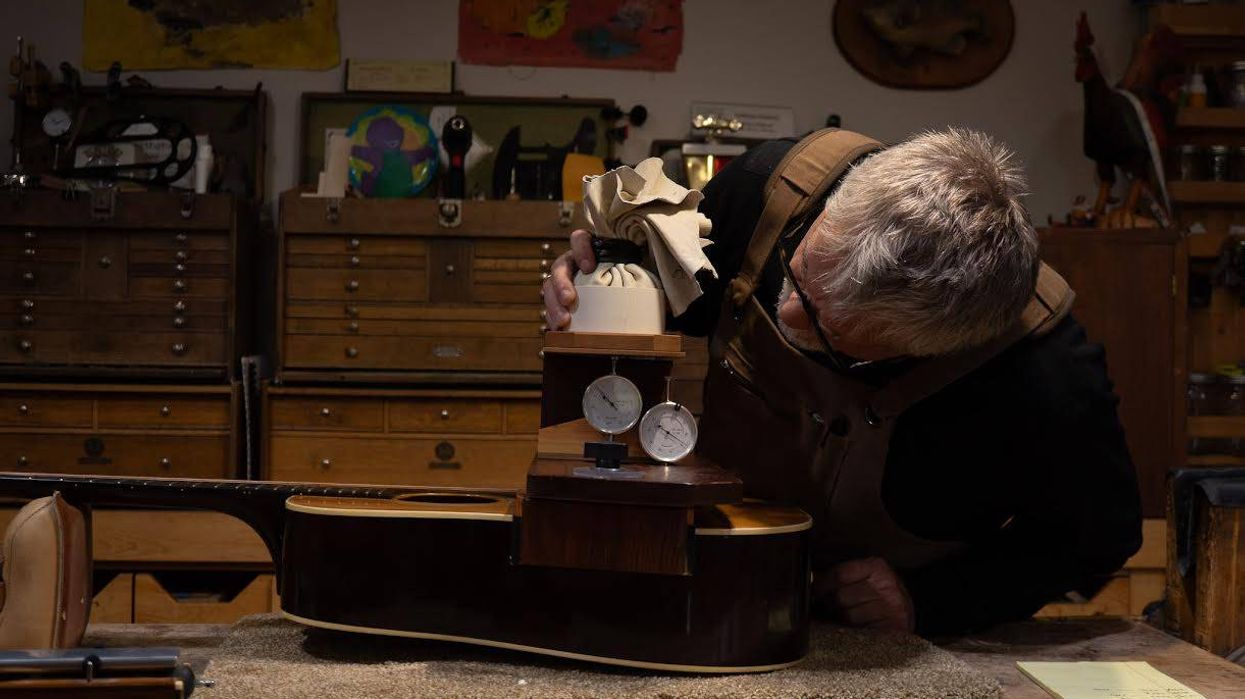It’s Wednesday and you’ve just got a call to sub a club date on Friday. The bandleader has sent you a long list of songs to cross reference with your own “active songs” list. At this point in your career, you’re pretty sure you have most of the 120 songs the leader requested.
Fast forward to Friday. You arrive to the gig and there isn’t enough time for a soundcheck. Many of the little questions you have about the songs will go unanswered.
The set starts and a peculiar thing happens: The bandleader starts calling songs that aren’t on the list. As the set evolves, you find more and more songs you didn’t prepare because you weren’t given notice. Yeah, you just spent two days making cheat sheets and transcribing specific solos that are irrelevant now.
The first time you’re onstage when this happens, you’re likely to experience some panic. But the more you play these types of gigs, the more relaxed you’ll feel about the situation. For one thing, you can’t control what the bandleader will do. Yes, it puts you in an awkward position, but in the world of pickup bands and one-off gigs, you have to learn to fly by the seat of your pants. It’s a big part of being a professional musician.
Click here to download the MP3s for this lesson.
Ear Training
There are ways to get through these gigs and actually sound good in the process. The key is to acquire skills to deal with such circumstances, and developing your ear is a crucial part of getting through what I call a “Go Fish” set. Specifically, having the ability to hear chord relationships will give you a lot of power.
When you listen to a song, can you detect if the chord cycle is I–IV–I–V without touching an instrument? If you can train your ear to hear these chord relationships, you’ll be able to fake your way through a surprisingly large number of songs.
Of course, this is easier for a guitarist than a bassist. Six-stringers can take a moment to wink at the audience, do a windmill, and figure out the first chord. But if a bassist misses a downbeat, they’ll immediately get glares from every bandmate.
Chord DNA
Many of the songs in a given style or genre share harmonic traits. One obvious example is blues. Chances are, if someone starts playing a blues, you can find your way through it pretty easily. You can hear where the I, IV, and V chords are played, even if they don’t conform to standard patterns.
The only missing piece is figuring out what key the song is in. It’s not uncommon in these situations for the bandleader to just start. There’s no band meeting to discuss key. You’re on your own. Sink or swim.
Inspector Gadget
At first, you may have to hunt and peck a little to find the root note. With experience, however, you may develop the ability to pick up some hints about the key—even without having perfect pitch.
Over the years I’ve come to recognize the sound of certain chord shapes. I can hear what a standard D shape sounds like. In fact, I can hear all the standard shapes. When someone starts a song with a basic G chord, I know it. I don’t have to hunt for the key.
This obviously gets more complicated when capos are involved. It’s still possible to hear the shapes, but you have to discover the new root. Unless, of course, you can see what fret the capo is located on.
Perfect Pitch
Many people get caught up in the hunt for perfect pitch. They think that if they’re not born with perfect pitch, it’s not worth working on. It also tends to make some musicians feel inferior if they lack this talent.
Consider this: Relative pitch is actually more practical than perfect pitch, and it’s totally attainable. Relative pitch isn't a mystery. Here are a few tips for developing it.
First, don’t be focused on not knowing the exact pitch. Focus instead on knowing the relationship of the first note or chord to the others around it.
Don’t forget, you should also be counting. It’s important to know what the chords are, but also for how long each one lasts. This way, if you get thrown a guitar solo, you can jump right in and play something musical.
There are a lot of blanks to fill in when you’re standing in the musical crossfire:
The song is in the key of _____.
The time signature is_____.
The verse chord cycle is_____.
The chorus chord cycle is_____.
The Fake Out
One of the sneaky things I may do if a bridge appears that I don’t know is lay out for the first beat. If my ears are super sharp, I may be able to jump in on the end of it. Usually after one beat, I can hear the chord and jump in on a rhythm. As long as you play in time, it won’t sound bad. All rhythms don’t have to start on the first beat. For instance, it can be totally cool to play hits on beats 2 and 4. This gives you a little room to slip into the music.
Homework
Now it’s time to get some ears-on training. I’ve made several playlists that will help you develop relative pitch. In each playlist you’ll hear me play the diatonic chords in the key of C. I’ve also added the bVII (Bb) and bVI (Ab) because they show up in a lot of rock music as well. Remember, the key isn’t important. We are only concerned about the relationship between the sounds of the chords. If you can hear a I–VIm–V in C, then you can just as easily pick it out it in Eb.
In Playlist 1, you can hear one of the previously mentioned chords get strummed, followed by the I, or tonic chord. After the last chord, you’ll hear a voiceover announcing what chords were played. I’ve also included another playlist thatis exactly the same, except without the immediate gratification of the voiceover.
Playlist 2 is a collection of all the various chords without the resolution to the I chord. I’ve also included a version of this playlist without the voiceover.
Next Steps
There are quite a few ways to practice with these examples, and the good news is you don’t need your instrument handy. Whenever you have some downtime on the bus, in the car, or riding the subway, you can pop these tracks on and get in some ear training.
Start by loading up Playlist 1 in your preferred MP3 player or music app on your computer. This playlist will help you train your ear to hear the relationship between each chord and the I. Keep repeating it until you start to know the character of each degree. After you get a sense of how each chord sounds resolving to the tonic, try placing the playlist in shuffle mode. Cool—a quiz!
Eventually, you’ll be ready to move onto Playlist 2. Stick to the voiceover version until you become comfortable hearing each chord without the resolution.See if you can identify each chord by its degree as it passes by, even if it never resolves to the tonic. This last playlist will be the most challenging and will start to simulate the experience you may have on a “Go Fish” gig. The chords won’t resolve so quickly in shuffle mode, so the challenge will be to guess the sequence of the chords. Remember: Don’t peek at the screen when the examples are playing!
Now that we’ve cleared that up, has anyone seen my rope? I need to tie up a few bandleaders.



























